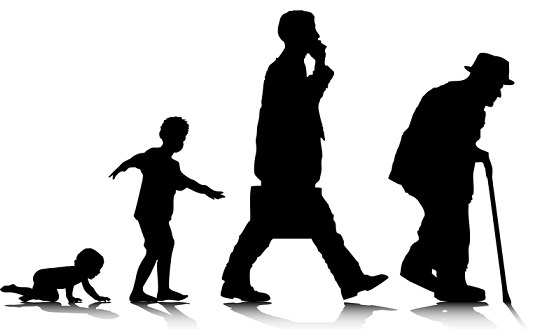

Human body grows and develops through various steps and under different conditions. This can be broadly classified into prenatal and postnatal growth.

Understanding nature, nurture, and the intricate interactions between the two is necessary to comprehend the growth and development of humans. Although the phrases "growth" and "development" have different meanings, they are sometimes used interchangeably. Prenatal and postnatal are the two main growth phases. This applies to all mammals, including humans. Besides growth, humans' intellectual capacity and their interaction with their social, geographical and environmental aspects contribute to their development.
Prenatal development encompasses those changes that occur inside of the mother's womb. This is also known as "intra-uterine development" since the uterus serves as the environment for growth of the foetus. From fertilisation till birth, this time period is known as prenatal development. The pace or rate of growth of the foetus slows down from roughly 36 weeks to 40 weeks, possibly because the availability of space in the uterus is becoming less with foetus growth.
It should be noted that an infant or newborn has very less ability to participate in their social relations or interactions. During this time, the foetus can respond to the mother’s voice. This is also the time when environmental and social influences and mother’s mental and physical health can impact the growth of the foetus.
Postnatal development begins at birth and lasts until adulthood or maturity. The newborn stage starts at birth and lasts until the baby is two weeks old. It is a period of extremely rapid change. During this time, a number of crucial things can happen, including the beginning of parent-infant bonding and the establishment of feeding routines.

Infanthood can span from two weeks of birth to a full year. The foundational stage of life is marked by a fast shift in the organisation of the neuromuscular system, psychological development, and physical systems. During this period, children develop the ability to understand signs, and they become close to their parents. Since brain and bodily growth is rapid, children of this age require proper nutrition and care to grow. In low and middle income countries, malnutrition and illness among infants are prevalent.
Childhood typically includes the final stages of infancy through the start of puberty. Environment and heredity each contribute in different ways to physical development. As a result, a child's hereditary development potential may be influenced by a variety of environmental factors, such as nutrition, health, parents' socioeconomic status, psychological well-being, and the like. From this age till the age of 3 the child becomes aware of their self and their social background.
Puberty typically begins around the ages of 14 (between 13 and 16) for boys and 13 (between 12 and 15) for girls. During younger years, the rate of growth slows. Near the end of the late childhood phase, growth becomes minimal. The age of adolescence marks the start of adulthood. Puberty and the teenage phase last roughly from 18 years to 20 years.
There are two phases to this time period: prepubertal and pubertal. A little more than two years consist of the pre-pubertal stage. The weight gain is slowed at this time. Lengthening the legs results in an increase in height. The pubertal period is when sexual organs reach maturity. Girls experience their first menstruation and the onset of ovarian activity.
During puberty, or prior to that teenagers experience various social connections that influence their behaviour. They develop certain habits, take decisions, challenges and most importantly steps towards becoming responsible citizens. So, here not only the role of family but also the role of society becomes vital. Teenagers may lack proper brain development if they do not get proper care and attention. They note various events in life, including national and global, and get introduced to new things about themselves and people. This is why children raised in a healthy manner develop properly and children raised in unhealthy environments lack behind in many aspects of life.
The term adult refers to those who have reached their full size, strength, or maturity. When the long bones, such as the tibia, fibula, and others, lose their ability to develop in length, height growth stops. Males typically reach adult height around the age of 21, while females do so around the age of 18. Reproductive maturity is a crucial indicator of adulthood. Several social, economic and political changes occur in people’s lives during this phase. They become responsible citizens, take their decisions and become legally responsible for certain roles like voter, married, professional, etc.

Elderly couple
Description: Old people may require support for their movement
Senescence or old age begins after the life’s active phase. Because the environment has a big impact, ageing varies from one person to person and across societies. Many cellular changes take place during this time. As a result of age, tissues do not regenerate, and cells exhibit senile involution. The memory gets worse. Older people require more time to process information and act. During this stage people retire from their active life and need help from their family and society in order to survive.
According to the above discussion early childhood, later childhood, adolescent, and puberty are the four stages that make up the classification of the postnatal period. Growth of the human body can be seen maximum during the span of infancy to childhood. From adulthood, growth slows and ends completely.
Q1. What are the factors that affect prenatal development?
Ans. Factors that affect prenatal development include nutrition of the mother, Maternal health, Drugs, consumption of caffeine or alcohol, radiation from x-ray, maternal emotions, uterine crowing, heavy sedation or pollution.
Q2. What happens during adolescence?
Ans. The body experiences numerous anatomical changes throughout adolescence in nearly every body area. The process of sexual maturation happens at this time. Children may also experience growth of body hair in specific areas of their body.
Q3. How can we classify adulthood?
Ans. Adulthood can be classified into: early adulthood which covers people between the ages of 18 and 40, middle adulthood is defined as the period between 40 and 60 and senility or late adulthood is the period from the age of 60 to death.